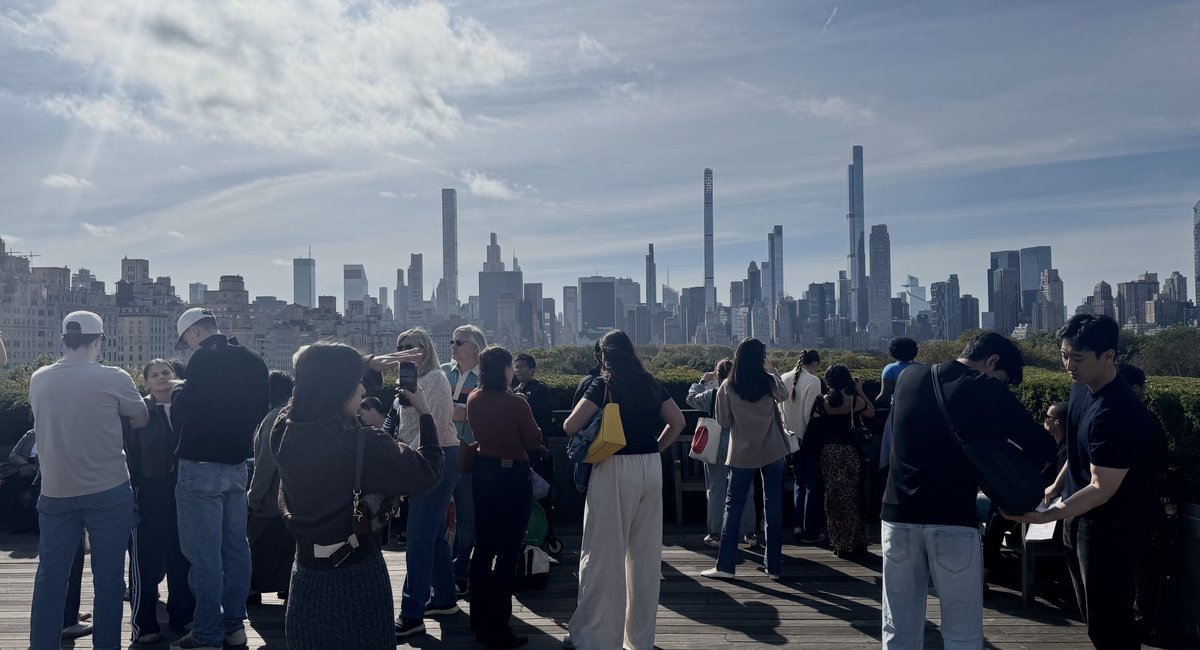New Yorkers and tourists from far and wide bid farewell to the Metropolitan Museum of Art’s rooftop on Sunday, the final day it was open to the public before it gets demolished and replaced.
Next year, the Met aims to begin construction on its new Tang Wing for Modern and Contemporary Art, which will replace the Lila Acheson Wallace Wing — and with it the famous Cantor Roof Garden. The new space isn’t slated to open until at least 2030, leaving museum visitors without one of Manhattan’s most impressive views of Central Park.
“ I’ve come here many times. Our children grew up here on the roof. We had many special occasions here,” said Jenny Fletcher, who moved to New York from Australia 20 years ago. “The views are beyond wonderful because the memories are irreplaceable.”
Crowds flocked to the rooftop on Sunday to take in the view one last time. The line to get onto the terrace was at least 15 minutes long during the afternoon.
While visitors took selfies facing the skyline, other solo day-trippers used the last opportunity to sketch the view, sip on cocktails or recall old memories of the city’s most cherished museum.
Designed by Mexican architect Frida Escobedo, the Met’s new Tang Wing for Modern and Contemporary Art is slated to open as soon as 2030. Its new rooftop will be open year-round.
The plan to replace the Lila Acheson Wallace Wing, which sits on the Met’s southwest corner and juts into Central Park, is still in the middle of an environmental review process, with a public hearing scheduled for later this month. If approved, the museum plans to begin tearing down the wing — which opened in 1987 — next year. It’s set to be replaced with the Tang Wing for Modern and Contemporary Art.
The new wing will come with a new, expanded rooftop that’s open year-round, unlike the current rooftop, which is only accessible to the public from April through October.
The Met states in planning documents that the new wing will allow the museum to show off more of its roughly 16,000 works of modern and contemporary art. ”Only approximately two to three percent of the collection is typically on display at any one time,” according to the documents.
Once the new space opens, the public will regain the type of Central Park view usually reserved for people who can afford to live right next to the city’s best-known green space. Because the wing juts into the park, visitors can see views of the city in three directions: The Midtown skyline — now overshadowed with the supertall skyscrapers of Billionaire’s Row — to the south; the park’s canopies of treetops to the west; and the remainder of the park and upper Manhattan to the north.
For decades, the Met Museum’s roof has offered a front row seat to the city’s ever-changing skyline.
Ryan Patterson, an architect who visited the rooftop on Sunday to sketch the view, observed how the city’s skyline has evolved over the years.
“It’s a nice scene with the city on the horizon. The city has changed a lot, so I’m noticing all the towers that are super skinny and tall and it’s not a view that I’ve seen a lot from this side,” Patterson said, running through the details of his illustration. “The background is just this sort of glass and steel and brick canvas in the background that makes this kind of dramatic backdrop.”
By the time the new rooftop reopens, the view from the Met’s rooftop is likely to have changed even more.

